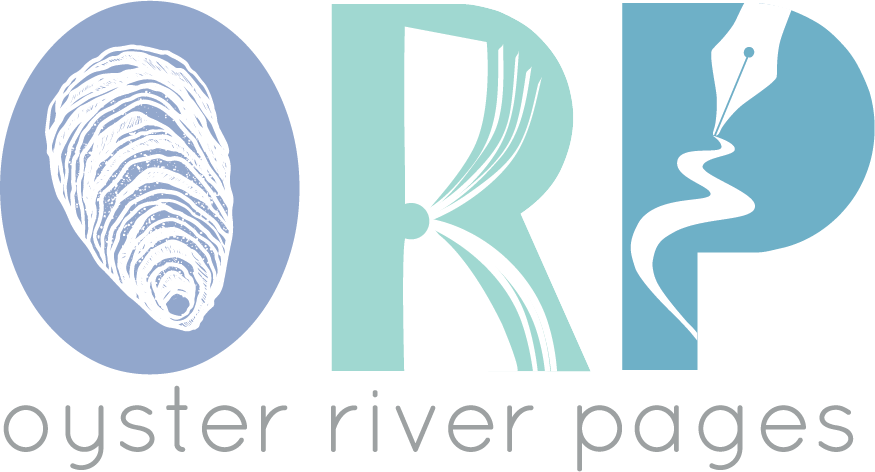The Whole World of Hope in a Comma
After Arthur Dove’s March, April (1929)
JESSE CURRAN
Have one more painting, pastel 20 x 20,
which is not as yet framed.
Just done in fact. Brilliant blue, brown etc.
-Arthur Dove to Alfred Stieglitz
31 March / 3 April 1929
In the comma between November and December, I see this one in a Tribeca gallery on a Tuesday afternoon. I write in my notebook, a mushroom, a plume, a blue so blue I don't know how words might suffice. I stare at the blue and feel it is not a blue I know from our place, the jagged space between two necks. It is a blue I only know from an Italian sky. In evening. In mid-summer. A blue as a figure rather than a fact. A blue leaving one agape. A blue as a promise. A blue as a memory of longing. A blue as escape.
Out in the yard, my husband drapes burlap over the pear trees to keep the tiny buds from turning into crystals. Windy and gray, we dwell within the comma between March and April. Yes, bursts of daffodils, but also flurries and inches of cold Nor’easter rain in the forecast ahead.
Knowing all the brown will soon be green, Dove finds blue. A fauvist blue, a Matisse nude-in-blue, a blue he calls brilliant. Yes, a blue so blue I need to read a book about blue to track its history. A blue like the blue we painted the basement playroom. We made a wild blue room in an interior world that otherwise defaults to neutrality. We do this so the kids might always know how it feels to be saturated, irrevocably.
Dickinson writes of the birds screaming, the saddest noise and the maddest noise. She writes about the line between March and April, the magical frontier. The line between March and April is not forsythia yellow, but rather screams blue. Screams the inevitability of fecundity. Screams the dust of pure pigment. Layer after layer, a swarm of particles holding the flourish of light.
I run my miles along the length of West Shore Road, tracing the base of the harbor so I can turn up the east side and head to the old yacht club. So I can be close to Dove. It’s not the view so much as the cold wind, which chaps my knuckles, that brings him to me. I run with the wind and on return, push into it. I see a man hauling bags of clams into the back of his pickup. The neon green seaweed splayed on the rocks. The cattails pouncing with the wind. I run my miles to make a spring in my winter blood, to erase the line between ice and ease.
This year, in this comma between winter and spring, there’s a lot of waiting. For friends to call back, for the rain to stop, for the cold to go away. For the kids to turn off the video games and return to the yard. These days, I find myself waiting for someone to reach out to me.
I meet my waiting, which is sometimes a sadness, by looking at pictures, then looking at the world the pictures refract. With Dove, this is so often the world in front of me. The looking is not so much an obsession but rather a small way of working with the sadness. These abstractions, which he called extractions, open a space to swim within even on the most impossible days. Not what the world looks like. Instead, how look merges with feels and knows and senses and seems. The beholding dissolves the hundred years between us, opening windows from these twenties to those twenties. This means so much to me.
Sometimes, an artist comes into one’s winter, smudging a palette of azalea and magnolia, dotting a world on the verge of chartreuse. He comes dressed in ultramarine and knows that what lies beyond the comma is a means of resurrection. In the meantime, I read a book by a poet moving through a divorce by gazing at Vermeer, then one by another grieving her husband through studying Mary Heister Reed. I see how a painter might save a poet. I sit with no namable grief. No divorce, no lost spouse, no sick child. Just the world as it is. Two strong-willed kids and a job that often burns me. A fatigue in facing how, for most, the means don’t seem to matter so much as the end. Then Dove appears with his calloused hands and phonograph on the deck of the yawl and his wish to go deeper into the storm. He is a lighthouse on the periphery, signaling flashes of lucidity, a message of how to be in place in my place and how to make a home for my home. Here’s Dove giving me a blue so blue I can’t place it outside so I find it inside. Here’s Dove—captain of color—becoming my means.
A mushroom of anticipation. The whole world of hope in a comma. I find that riotous blue inside me. Then, two weeks beyond the March-April line, I find it again on a Tuesday evening. But it’s not Italy. It’s here, the space between two necks. Cherry tree blossoms against a sky that recalls to me a pastel on a second floor in the city. I thought April was all lemon-yellow and bubble-gum pink and spring-bud green. Dove was right. Again, he teaches me to see. Outside me, inside me. April—beyond me. April is a possibility, a means of shaping a shelter, sized twenty by twenty, a brilliant blue home in a season of mutability.


